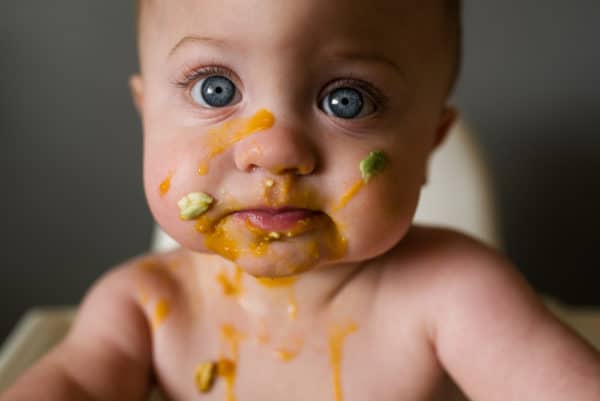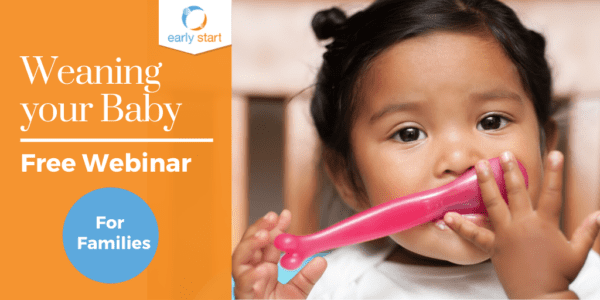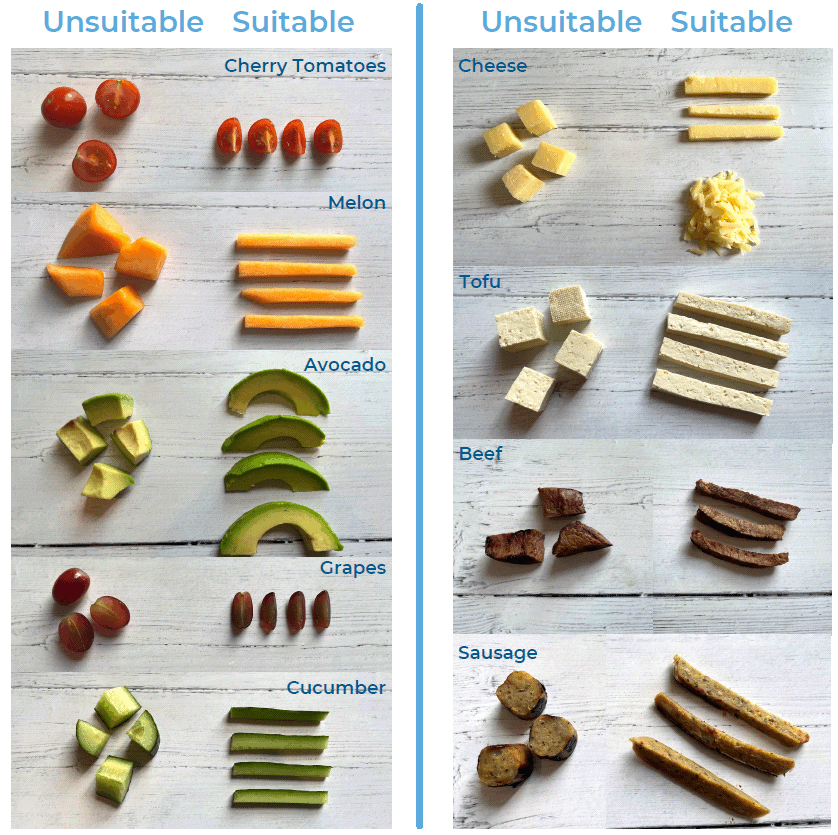Preparing Food Safely to Reduce the Risk of Choking
As a parent, it’s normal to worry about how your little one will manage eating and you may be nervous about gagging and choking. We want to support you to feel more confident about safety at mealtimes, so in this blog we explore simple steps that you can follow to manage gagging and prevent choking.

Gagging – Safety at Mealtimes
Gagging is something that many families worry about, particularly when introducing new textures and fingers foods. Firstly, please be reassured that gagging is completely normal and can happen quite a lot during weaning. Here is the reason why:
- Children’s gag reflexes are much more sensitive than ours- it’s quite far forward on their tongue
- Gagging is actually a safety mechanism to reduce the risk of choking- as the motion of gagging helps to bring food back to the front of the mouth
- You’ll find that the more exposure and experience your baby has to different textures, the further back the gag reflex becomes on the tongue!
- That’s also why it’s important to move your baby on to thicker and lumpier textures so they get more confident to bite, chew and swallow.
What you might notice if your little one is gagging on food:
- Eyes might water
- Face may go red
- Tongue moves forward (or out of their mouth)
- You may hear coughing and spluttering
- They might bring the food forward in their mouth
- They might make a retching movement, or they may vomit.

What should I do if my baby gags when eating?
- If your baby does cough or gag when eating, it’s important that you stay calm and reassure them
- More often than not, your baby will carry on eating, but if they become upset don’t force them to carry on and simply try again at the next mealtime
- Afterwards, give them a smile, some reassurance and a sip of water if needed.
Remember to always stay with your little one while they are eating!
Top Tips
- To help your baby get used to different textures and tastes, try moving on to mashed and finger foods (from purées or blended) as soon as they’re ready. This helps them learn how to chew, move solid food around their mouth and swallow solid foods.
- Give your baby a spoon and let them try feeding themselves – you might need to stick a mat under the highchair though!
- Babies take different amounts of time to get used to lumps, but it’s an important skill they need to learn. Offer more mashed, lumpier foods as well as a variety of finger foods, and stay with them so you can be sure they are swallowing it safely.
Parents can be supported to get lots more advice and support on introducing solid foods by signing up to one of our FREE Weaning Webinars (opens in new tab) or taking a read of our FREE Parent Course, Feeding your Baby in the First Year (opens in new tab).

Choking – Safety at Mealtimes
Choking is something that a lot of parents worry about, but it’s reassuring to understand that it’s very uncommon. For babies and young children, food can be a choking hazard, especially if they don’t chew their food well or they try to swallow it whole. Choking can happen with any foods, however firm foods, food containing bones and small round foods present a higher risk. There’s lots you can do to reduce the risk of choking at mealtimes:
- We advise parents to always stay with their little ones while they are eating or drinking
- It’s important to consider the eating environment to ensure children are in a sitting position to allow them to swallow the food safely or spit it out, if required
- Avoid distractions at mealtimes to support little ones to focus on the texture of the food and to co-ordinate putting it to their mouth to bite or chew and swallow safely
- It is also important to think about how foods are prepared (see below)
- Textures of food can develop as your little one become a more confident eater
- It’s important to offer encouragement to your little one at mealtimes to manage foods safely
- Role model chewing and swallowing. Encourage your little one to chew and swallow food properly and not to rush eating.
What you might notice if your little one is choking on food:
- they’ll be unable to breathe, cry, or cough
- they’ll have a red puffy face
- they’ll show signs of distress.
If you think your child is choking and cannot breathe properly, you should:
- shout for help
- get them out of the high chair
- support their chest and chin with one hand and – with the heel of your hand – give 5 sharp blows between the shoulder blades
To give you a little more confidence, you might like to take a short paediatric first aid course (opens in new tab). The NHS (opens in new tab) and Red Cross (opens in new tab) also have some helpful videos, if you’d like to find out more.
Food Preparation

Choking can be a cause of injury in young children, mainly because their small airways are more easily obstructed. Follow these tips to reduce the risk of choking:
- Avoid offering chunks of food,such as pieces of sausage,chunks of fruit and vegetables and cubes of cheese
- Instead of chunks, cut foods into narrow batons to make them safer and more manageable (see image below)
- Start by softening hard fruits and vegetables (such as carrot and apple) by steaming or simmering them until soft. As children become more confident eaters, you can gradually increase the firmness of the foods you offer
- Peel the skin of fruits, vegetables and sausages to make them easier to chew
- Always remove hard pips and stones from fruit
- Chop dried fruits, such as raisins, dates and apricots, and only include as part of a meal
- Cut round foods, such as cherry tomatoes and grapes, into quarters
- Avoid offering hard foods, such as whole or broken nuts and hard sweets
- Instead, crush or flake nuts and peanuts and add to dishes, such as wheat bisks
- Avoid offering sticky foods, such as marshmallows and raw jelly cubes
- Be careful of foods such as popcorn. It’s best to wait to offer these to children until they’re a little older and more competent eaters
- Remove bones from meat or fish
- Foods (such as cereal or rusks) should never be added to a baby’s bottle as this can cause choking.
- Ensure children sit down to eat and that you encourage them to chew their food and finish what’s in their mouth, before putting more in.
Useful Resources:
In this video we explore information and guidance on preparing and serving food to reduce the risk of choking.
- Click here to open our Making Food Safe for Babies and Children tip sheet (PDF, 2MB)
- Help for Early Years Providers – Department for Education (opens in new tab)

Eating Environment Tips
- Babies/toddlers should never be left alone at mealtimes when eating and drinking – it is always important to supervise them
- Ensure babies are ready for the introduction of solid foods. This is usually around the age of 6 months when the following signs are seen together- firstly baby will be able to sit up unaided and hold their head steady, they will be able to coordinate their eyes, hand and mouth meaning they can look at food, pick it up and put it to their mouth and they will be able to swallow food and be less likely to spit the food out. You can find more information on the Start for Life (opens in new tab) website
- Ensure baby is in a sitting position in a high chair and strapped in safely at mealtimes. This means they can swallow the food safely and also spit the food out easily if required. Toddlers should also be sitting up well, with their feet on the floor
- Try not to have any distractions at mealtimes so your child can focus on the food they are eating.

Early Years Providers
As outlined in the EYFS (3.29) Staffing arrangements must meet the needs of all children and ensure their safety.
Providers must ensure that children are adequately supervised, including whilst eating, and
decide how to deploy staff to ensure children’s needs are met. Providers must inform parents
and/or carers about staff deployment, and, when relevant and practical, aim to involve them in
these decisions. Children must usually be within sight and hearing of staff and always within
sight or hearing.
There is lots of additional support on food safety provided by the Department for Education on their page ‘Food safety – help for early years providers’ (opens in new tab)
For more information and tips on introducing solid foods, check out our online Food and Nutrition for Infants training (opens in new tab), created especially for early years settings!

Thanks Emma for sending useful and interesting information. I had read and got alot of important information when feeding to babies and younger children. I know how to cut some of fruits and vegetables when serving to kids. I also understand to take precautions if child choke or gagging. Hope you will send some important information next time. Thanks
Thank you Emma , very helpful information
I have learned how gagging differ from choking hazard.
We have to be aware about the position giving to the babies,the pictures show clearly the suitable and suitable choices.